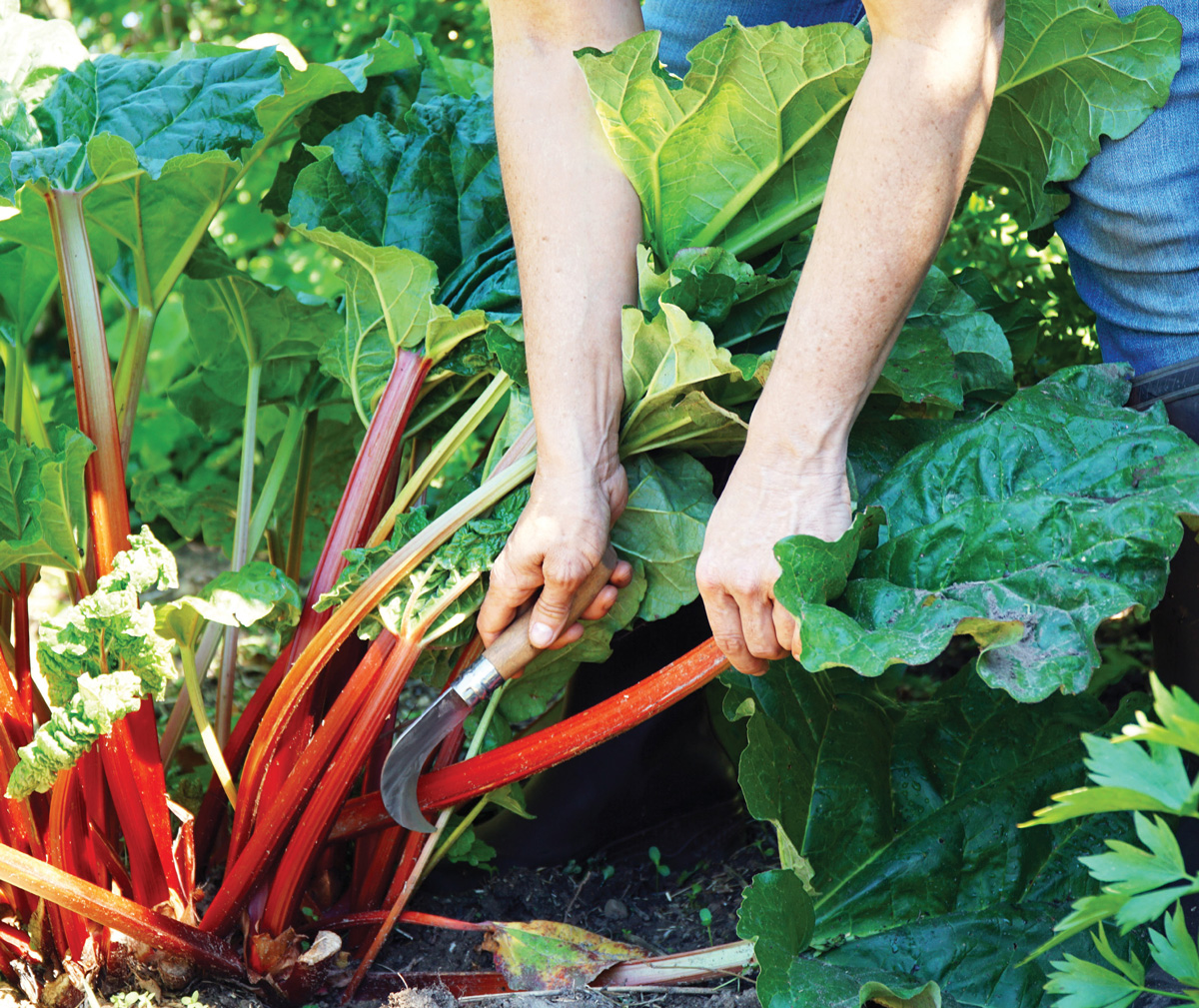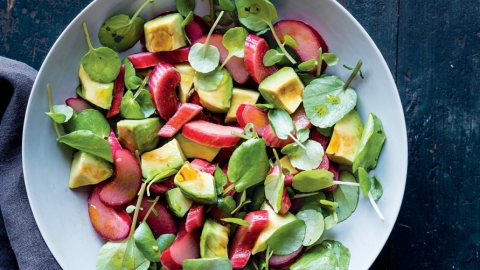In season: Rhubarb
Spring is the time of year my late father-in-law eagerly awaited. Not for the lengthening days, blooming shrubs and leafing trees, but for his beloved rhubarb. He spent his childhood in northern Montana, just this side of the Canadian border, and one of the few edibles his family could successfully grow and harvest in the still-cold spring was rhubarb.
His young memories of the warm, sweet-tart fruit were never forgotten, and as soon as rhubarb appeared on the supermarket shelves in Lafayette, California, where he settled with his own family, he would buy some to “stew down,” as he called it. He’d chop up the crimson stalks, mix them with sugar in a saucepan with a little water and heat them until soft and syrupy. Every morning, he’d warm up the stewed fruit and spoon it over hot buttered toast. This ritual was repeated daily as long as rhubarb was in season.
My husband, who learned to love rhubarb at his father’s breakfast table, starts inquiring about the stalks in January. As soon as I see some, I bring home enough for a week’s worth to spoon over toast. In the meantime, over the years he’s come to look forward to my rhubarb and strawberry galettes and (my personal favorite) Rhubarb and Avocado Salad.
Rhubarb can be grown in a number of climates, depending on the time of year, but there must be a cold period below 40°F to stimulate bud break. Luther Burbank, the famous horticulturist of Santa Rosa, developed varieties of rhubarb from New Zealand varieties that were better suited to grow in California’s temperate climates.
Today rhubarb is field grown in California on a very small scale and in Oregon and Washington, on the West Coast. The earliest crops that come into the market come from hothouse production in Washington, before the California field production starts. Rhubarb varieties are red, speckled and green; although there is little difference in taste or uses, the red varieties are the most common ones.







